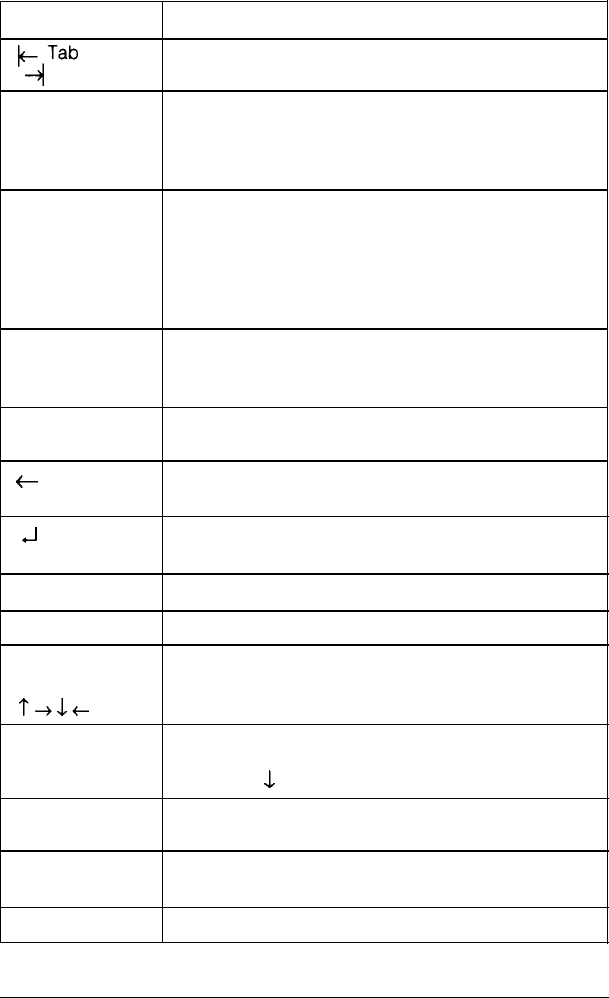
Table 4-1. Special keys
Key
i++Tab
Caps Lock
Purpose
Moves the cursor one tab to the right in normal
mode and one tab to the left in shift mode.
Changes the letter keys from lowercase to
uppercase; changes back to lowercase when
pressed again. The numeric/symbol keys on the top
row of the keyboard are not affected.
Shift
Changes the letter keys from lowercase to
uppercase while held down and changes other keys
from their normal characters or functions to their
alternate characters or functions. When the Caps
Lock LED is illuminated, changes letter keys from
uppercase to lowercase.
Ctrl
Works with other keys to perform special functions,
such as editing operations in MS-DOS and
GW-BASIC.
Alt Works with other keys to enter alternate character
codes.
t
Backspace Moves the cursor back one space, deleting the
character to the left.
+I
Enter
Ins
Del
Home, End,
PgUp, PgDn
T+lt
Num Lock
Esc
F1 - F12
Print Screen
Ends a line of keyboard input or executes a
command.
Turns the insert function on and off.
Deletes the character at the cursor.
Control cursor location within application programs.
Changes the function of the cursor keys. For
example, when the Num Lock function is on and
you press
1
, you get the number 2.
In some application programs, cancels the current
command line or operation.
Perform special functions within application
programs.
Prints text on the screen to the printer.
Using the Equity LT-286 4-9


















